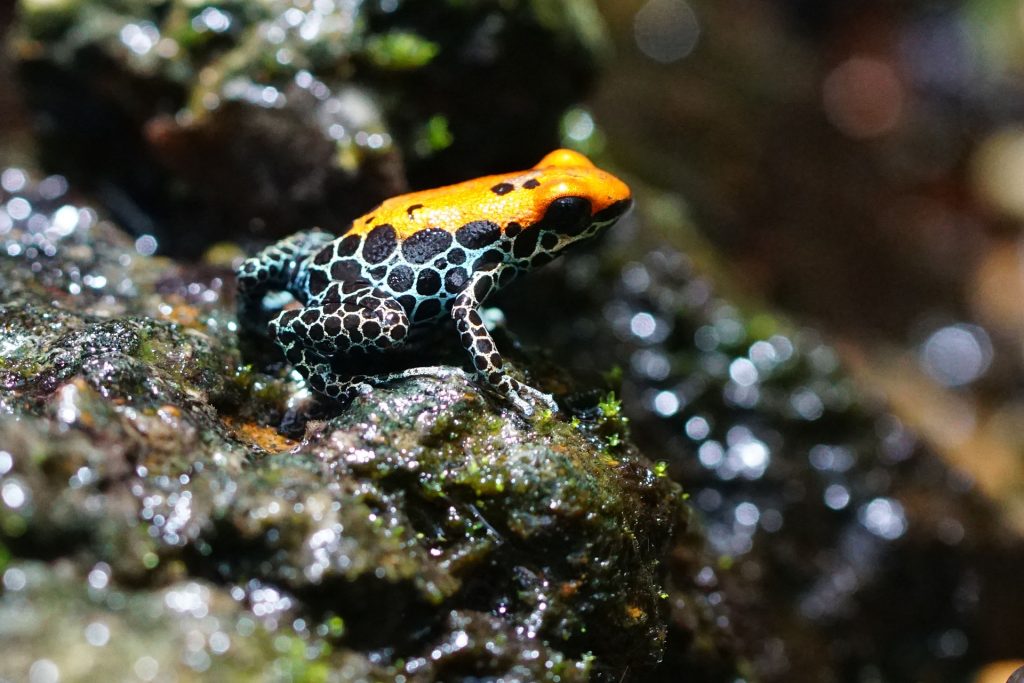Last updated on July 13th, 2020 at 08:06 pm
Thinking of natural selection and evolution, the picture that comes to mind is that of animals chasing each other, competing to be fast and strong. Merits such as biting strength, speed, reflexes, size and sensing abilities, have prevailed among the most ferocious of beings for millions of years. But nature’s conspiracy to use the weapon of poison shifts the balance of power.
Venom as a weapon in the bag changes the rules of engagement drastically. Now the slow can beat the fast and the small can kill the big. As a potent and efficient weapon, it can be found in animals all around the animal kingdom. From spiders, snakes and scorpions on land, to jelly-fishes in water, venom is deeply embedded in the ecosystem as a powerful tool. Mammals like platypus are also known to secrete venom.
Poisonous Experts

Venom is produced by many vertebrates and invertebrates, but the most famous, or rather, “infamous” are the snakes.
As predators, snakes are losing a “few” key attributes. They have no legs to chase down their prey, no paws to knock it down, and no claws to hold their victims. But none of these deficiencies matter much, because evolution has handed snakes the ultimate weapon – venom. With it, the various types of venomous snakes can kill or debilitate their victims, before they escape.
Usually, it is not a single chemical acting as a venom, but a collection of various types of lethal ones. Its composition differs from one snake species to another which is according to the habitat and niche they choose to live in. The type of prey they prefer to hunt and its physiology is basically kept in focus.
What’s Venom?

Venom is not some “magical syrup”, but a slightly tweaked form of proteins and enzymes generally present in an animal’s body.
Vast majority of the proteins and enzymes found in snake venom closely resemble substances found in other parts of The body of a snake synthesizes loads of enzymes (which are nothing but proteins) having varied roles – for example, the enzymes functioning in the liver, and/or in digestion. These enzymes closely resemble the chemical nature of the constituents of the venom produced by the snake. The genes that control the production of these substances in other organs somehow became activated in the salivary glands. Since these chemicals are able to kill the snakes’ prey in an increasingly effective manner, the individuals having these got selected for survival.
There are three different kinds of snake venom:-
- Cytotoxins – acts on cells
- Neurotoxins – acts on nervous system
- Myotoxins – acts on muscles
As mentioned earlier, the venom composition varies and is mainly dependent on the diet of the animal. The best example can be that aquatic snakes have the most deadly type of venom, which has a high concentration of neurotoxins. Aquatic snakes have a streamlined body, but they cannot match the swiftness of their fellow animals, mostly small fishes. Thus, if the venom is not quick and lethal enough to cause damage to the prey there is a high chance that the victim escapes.
Terrestrial ones don’t bother much about the escaping of their prey. In order to keep a track of their victim’s whereabouts, they usually sense their smell. In some cases the venom contains a strong diuretic which causes the prey to urinate while running away, which can now be easily tracked.
Preparing the Syringes

Snakes have modified frontal teeth, known as fangs. As the type of venom produced in their salivary glands varies with species, so do the fang type they possess. The teeth are hollow tubes which act as syringes, injecting the poison into the prey in contact.
The class of snakes which includes vipers has the most advanced type of fangs. In vipers, the fangs lie folded back against the roof of the mouth, but they drop down when the snake is hunting. And when they stab into prey, the venom shoots down from the salivary glands, through the hollow fangs, and into the prey.
How Lethal Is It?

The lethality of the venom mainly depends upon two factors viz., the composition of the venom and the quantity of the venom secreted.
Even though this mixture of chemicals is produced to kill, humans have used several venom components as drugs. For instance, certain toxins which cause hemorrhaging by preventing clotting of blood are used to treat patients suffering from blood clots.
Similarly, the specificity of venom action inside the prey’s body has opened a new door to look for a cancer cure. There may be certain toxins which selectively affect only the tumor cells.
Thus, the strides which organisms take in order to survive surprises us yet again. It is the ever-lasting struggle to survive, which brings out the best in the worst of the situations.
A bit of chance and a perfect stressed condition is all it takes to create a world we live in.
Besides this, you can view our video and blog collections in the Video Section & Blog Section of the website.
He is a Life Sciences Graduate from the University of Mumbai, DAE, Centre for Excellence in Basic Sciences. Writing a brief knit story to connect with people and using words instead of the usual bs, are the go-to choices under his sleeves. A keen follower of the religion of "football" and a firsthand witness of the busy subway station they call research, he sets out to take another look.






